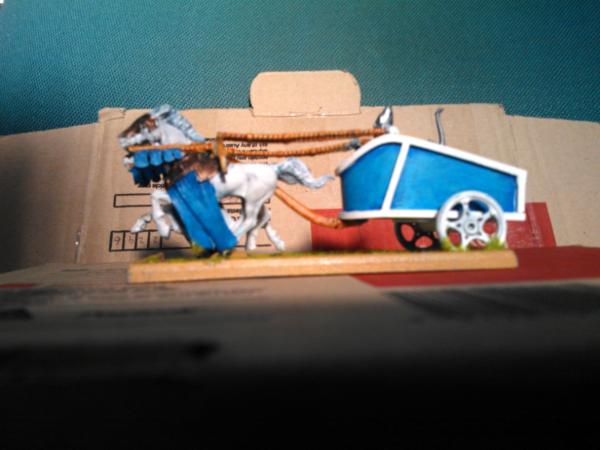| Author |
Message |
 |
|
|
 |
|
Advert
|
Forum adverts like this one are shown to any user who is not logged in. Join us by filling out a tiny 3 field form and you will get your own, free, dakka user account which gives a good range of benefits to you:
- No adverts like this in the forums anymore.
- Times and dates in your local timezone.
- Full tracking of what you have read so you can skip to your first unread post, easily see what has changed since you last logged in, and easily see what is new at a glance.
- Email notifications for threads you want to watch closely.
- Being a part of the oldest wargaming community on the net.
If you are already a member then feel free to login now. |
|
 |
![[Post New]](/s/i/i.gif) 2014/07/17 15:13:48
Subject: How to make plasticard strips bend without snapping.
|
 |

Squishy Squig
grimsby
|
So I'm trying to make iron gobs out of plasticard but I can't get the plastic to bend all the way round without it either snapping or restraightening itself. I've tried using boiling hot water and hold in a flame. The plasticard I'm using is pretty thin don't know the width but only about the thickness of two sheets of paper.Can someone give a few pointers?
|
|
|
 |
 |
![[Post New]](/s/i/i.gif) 2014/07/17 15:16:54
Subject: How to make plasticard strips bend without snapping.
|
 |

Infiltrating Broodlord
|
I made Ork shoulder armour and other bitsout of plastercard by heating a metal tube with a candle, then bending the card around the tube.Should be a cinch.
|
|
|
|
 |
 |
![[Post New]](/s/i/i.gif) 2014/07/17 15:37:53
Subject: Re:How to make plasticard strips bend without snapping.
|
 |

Squishy Squig
grimsby
|
I'll try it thanks for the advice
|
|
|
 |
 |
![[Post New]](/s/i/i.gif) 2014/07/17 19:31:03
Subject: How to make plasticard strips bend without snapping.
|
 |

Gargantuan Gargant
|
How long did you heat the material? If it was still springing back significantly, I would imagine that the heating was only superficial. Flames can be tricky to use, as the applied heat is intense - it's not difficult to scorch/melt one side of a sheet before the other is even particularly warm.
I'd stick with the hot water, personally (less chance of mucking things up with wasteful and stinky results), and make sure that you give the pieces plenty of time to heat evenly and completely. Also, it may help to heat slightly longer strips, allowing you to manipulate the ends for extra leverage and without worrying about marring the surface (you'll just trim it off, later). Cutting the teeth afterward also avoids creating points that focus the bending stress, increasing the likelihood of fractures.
TLDR: Use even, thorough heat to form an oversized part, then trim to shape.
|
The Dreadnote wrote:But the Emperor already has a shrine, in the form of your local Games Workshop. You honour him by sacrificing your money to the plastic effigies of his warriors. In time, your devotion will be rewarded with the gift of having even more effigies to worship.
|
|
|
 |
 |
![[Post New]](/s/i/i.gif) 2014/07/18 08:29:25
Subject: How to make plasticard strips bend without snapping.
|
 |

Anti-Armour Swiss Guard
|
HOT WATER. My HE chariot body was 1mm plasticard sheet and rod. Cut to size, then shaped using boiling water (I dunked it into the water for about 30 seconds, then removed it and carefully formed the curve.  This next bit is the key part. I then dunked it into COLD water to set the curve.
|
|
This message was edited 1 time. Last update was at 2014/07/18 23:34:05
I'm OVER 50 (and so far over everyone's BS, too).
Old enough to know better, young enough to not give a ****.
That is not dead which can eternal lie ...
... and yet, with strange aeons, even death may die.
|
|
|
 |
 |
![[Post New]](/s/i/i.gif) 2014/07/19 08:47:55
Subject: How to make plasticard strips bend without snapping.
|
 |

[MOD]
Anti-piracy Officer
Somewhere in south-central England.
|
Basically you need to get the piece heated up over 90 degrees C, form the curve, then cool it.
This is best achieved with water rather than a flame, since water cannot set fire to plastic or melt it.
Thinner sheet can be formed while cold and put into hot water to make it hold the curve.
Another way to do it is by holding the piece in the jet of steam from a boiling kettle. This can be useful when you want to bend a discrete area of the piece and keep the rest of it rigid.
|
|
|
|
 |
 |
|
|